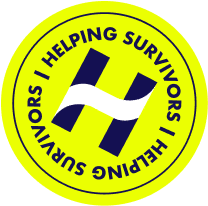Sexual Harassment Prevention


Author: Kathryn Kosmides
Survivor Advocate
- It’s crucial for all employers, regardless of their size, to have a comprehensive policy against sexual harassment that outlines prohibited behavior, consequences, and reporting procedures.
- Educating all staff members about the sexual harassment policy, acceptable behaviors, and reporting processes is essential for prevention — and oftentimes a requirement under local state laws.
- Employers should respond to sexual harassment accusations quickly and seriously, conduct investigations, and enforce stated punishments to create a safer workplace environment.
Victims of sexual harassment suffer challenges ranging from depression and anxiety to difficulty performing in the workplace or at school. They may have their ideas cast aside on the basis of gender or sexuality, or they may feel unable to speak out about teasing, crude behavior, jokes, or unwanted physical contact. Unfortunately, in many organizations, sexual harassment remains unnoticed by people with the power to stop it until it has already placed a heavy load on the victims.
At Helping Survivors, we understand the issues faced by victims of sexual harassment. We aim to give victims the support they need to move forward and prevent sexual harassment before it starts. These important strategies can create safer workplaces and schools.
What is Sexual Harassment?
Sexual harassment involves unwelcome conduct based on gender or sexual orientation. According to the U.S Equal Employment Opportunity Commission, such conduct includes the following:
- Unwelcome sexual advances, particularly when it continues after the victim turns down the perpetrator
- Requests for sexual favors, including sex of any kind or sexually related content
- Verbal harassment, including repeated unwanted comments or jokes
- Physical harassment of a sexual nature, including unwanted touching
The Equal Employment Opportunity Commission further notes that repeated instances of sexual harassment quickly create a hostile work environment in which many people struggle to work effectively. Victims of sexual harassment can be either male or female, as can perpetrators; however, 78 percent of people accused of harassment in the workplace are male. As many as 77 percent of women have already faced verbal harassment in the workplace, and 81 percent of women report experiencing some type of sexual harassment.
How to Help Prevent Sexual Harassment
Several critical steps can help prevent sexual harassment and make the workplace or school environment more effective and safer for everyone.
1. Developing a Clear Sexual Harassment Policy
The first step in preventing sexual harassment in the workplace is having a clear policy against harassment. Employers should create guidelines using clear language outlining prohibited behavior and the consequences perpetrators will face.
Furthermore, the policy should lay out how victims of harassment can report it. Without clear mechanisms for reporting harassment, victims may suffer longer before they get the help and support they need.
2. Training Employees
The idea that sexual harassment is unacceptable may seem so obvious that it should not require training. However, all employees must know about the workplace sexual harassment policy and what consequences they face for violating it.
In addition to clear training that names the conditions that create sexual harassment, employees need to learn what to do when they witness sexual harassment in the workplace:
- Speak up and stop harassment in its tracks.
- Report harassment when they see it, not just when directed at them.
- Take notes of details so they can serve as witnesses later.
Training can also cover lesser-known issues related to sexual harassment, including how women can harass men or harassment on the basis of sexuality. By empowering and training staff, employers can create a better workplace where people are less likely to suffer harassment.
3. Training Management Team Members
Training management team members to avoid and address harassment can prove critical. According to the Hiscox Workplace Harassment Study, 73 percent of people accused of harassment are in a senior position to the person they harass. Not only do managers need to know that they will be held accountable for their actions, including any harassing behaviors, but they also need to know what oversight is in place.
4. Taking Accusations Seriously
It’s easy for employers to sweep accusations of sexual harassment under the rug. The following are some all-too-common responses:
- “Oh, I’m sure she didn’t mean it that way.”
- “He hasn’t ever behaved like that before. It must have been an accident.”
- “Is that really what happened?”
If an employer’s initial reaction to an accusation of sexual harassment is to brush it off or blame the victim, future victims will feel less confident about coming forward. On the other hand, if they take accusations seriously and launch an investigation, future victims will feel more empowered to speak up and stop the harassment.
5. Using Stated Punishments
Employers must consistently implement the punishments specified in their sexual harassment policies. That means no exceptions for higher-up management team members, those with track records of good behavior, or those who are highly connected. Employers must make it clear that there will be consequences for harassment in the workplace.
6. Protect Victims
Employers must prioritize the protection of victims of sexual harassment in the workplace. That may mean the following:
- Preventing perpetrators from working close to victims, even if that means changing the perpetrator’s team or schedule
- Providing higher levels of oversight for employees accused of sexual harassment
- Ensuring that the victim does not face retaliation for reporting harassment in the workplace
Sexual Harassment Prevention FAQs
What Is Considered Sexual Harassment?
Sexual harassment encompasses any sexually related behaviors that are uncomfortable and unwanted. That includes unwanted physical contact and comments about gender, sexuality, and physical attributes, among other things.
What Are Common Examples of Harassment?
Examples of sexual harassment in the workplace or at school include:
- Unwanted jokes about sexuality or gender
- Unwanted touching
- Propositioning someone
- Asking for sexual favors, even as a joke
- Demanding sexual favors in exchange for any other activity
- Name-calling
- Slurs
- Offensive pictures or content
Why Is Sexual Harassment Prevention Important?
Preventing sexual harassment is critical for several reasons, including:
- It raises awareness of potentially uncomfortable or dangerous behaviors within the organization.
- It helps create a more comfortable work environment for everyone in the workplace.
- It empowers victims to speak up about harassment or potential harassment.
- It improves employee morale and focus.
Furthermore, there are legal consequences for allowing sexual harassment to continue in the workplace.
What To Do When You or a Loved One Is Sexually Harassed
If you or someone you love has been sexually harassed, there are several steps you can take.
- Remove yourself from the situation immediately. You do not have to stay in a situation that makes you feel unsafe.
- Tell the harasser you are uncomfortable with the behavior and want it to stop.
- Report harassment as soon as possible. In the workplace, that usually means going to HR. At school, it may mean reporting it to an administrator or counselor.
- See a counselor, if needed, to deal with the negative impact of harassment, including insomnia, anxiety, or depression.
- Get legal help if needed.
Helping Survivors assists survivors of sexual harassment and sexual assault in pursuing the help and support they need to move forward, from connecting them with a sexual assault lawyer to offering resources and support to stop sexual harassment in the workplace or enable survivors to heal. Contact us today if you would like to learn more about how we can help.

Want To Speak With A Lawyer?


